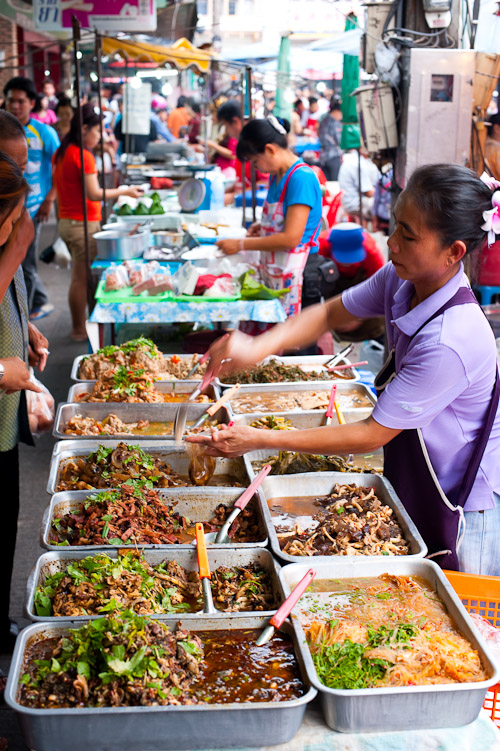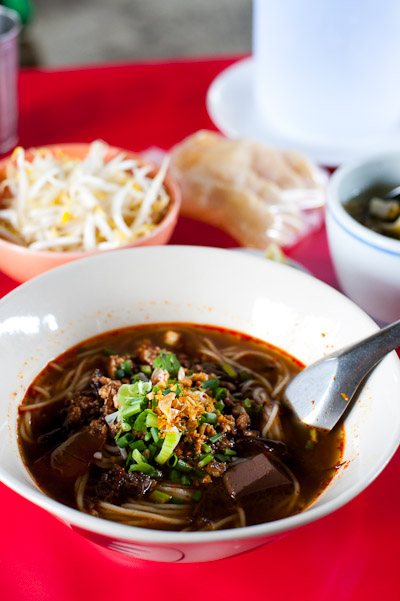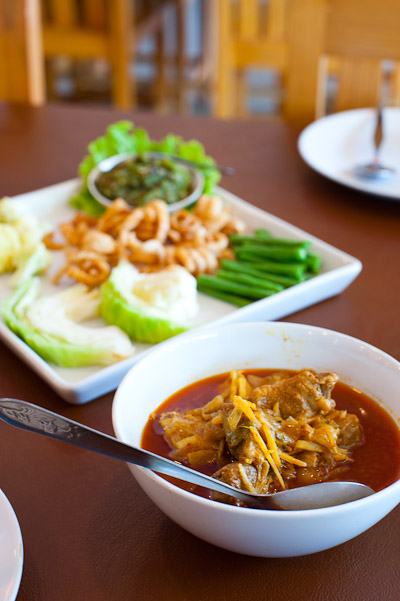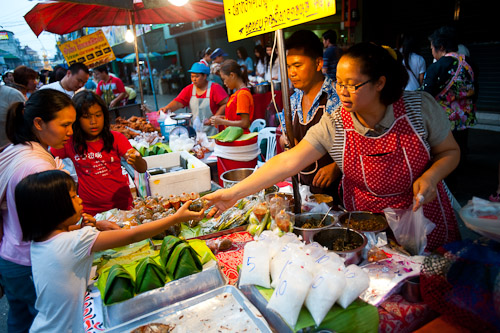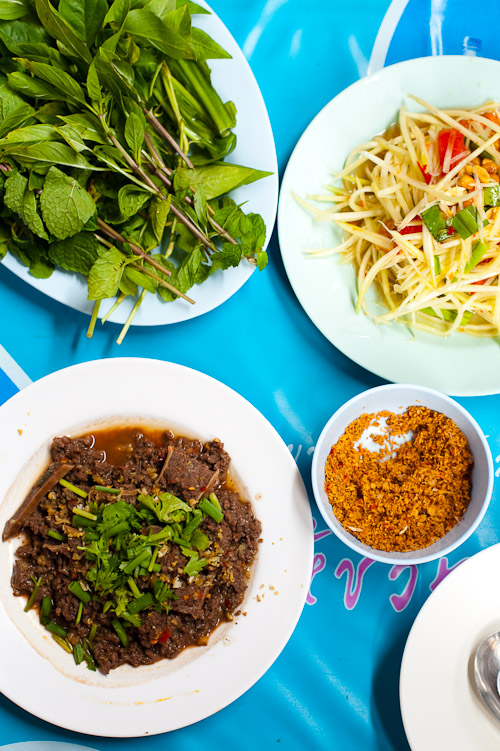 Jay Noy is the epitome of the northern-style food stall: informal, meat based and fully flavoured. The whole place is little more than a grill and one or two tables - most of its business is take-away - concealed in a parking lot/shed in the northern city of Lampang. Yet as is often the case in Thailand, a restaurant's atmosphere has an inverse relationship with the quality of its food, and Jay Noy is no exception to this rule.
Jay Noy is the epitome of the northern-style food stall: informal, meat based and fully flavoured. The whole place is little more than a grill and one or two tables - most of its business is take-away - concealed in a parking lot/shed in the northern city of Lampang. Yet as is often the case in Thailand, a restaurant's atmosphere has an inverse relationship with the quality of its food, and Jay Noy is no exception to this rule.
Starting at 12 o'clock and moving clockwise, there was a rich curry-like stir-fry of mushrooms and bamboo (it's mushroom and bamboo season up here); kaeng som phak boong, a deliciously sour northern-style soup of pork bones and crunchy morning glory; nam phrik taa daeng, a slightly watery but spicy version of the northern Thai dried chili dip staple; sticky rice; aeb moo, a grilled pork dish, and jin som, sour pork; and crunchy pickled veggies.
Everything I've eaten here is great, but the highlight is the meat, in particular the jin som ('sour meat' - the northern Thai name for naem) and the aeb:
The former (on the left) is fermented pork, that in this case, has been grilled in its banana leaf package. The latter is ground pork blended with egg and a curry paste, all of which are also wrapped in a banana leaf and grilled:
It's the northern Thai equivalent of the central Thai hor mok, a type of steamed curry, and the result is smooth, rich and meaty, and only a tiny bit spicy.
Arrive later in the day after the aeb and jin som have run out and Jay Noy does grilled meat, from pork ribs to cow teats.
And since you're in Lampang already, you may as well consider dessert at Khun Manee.
Jay Noy Th Suandawg, Lampang 11am-7pm
View Thai Eats in a larger map



















